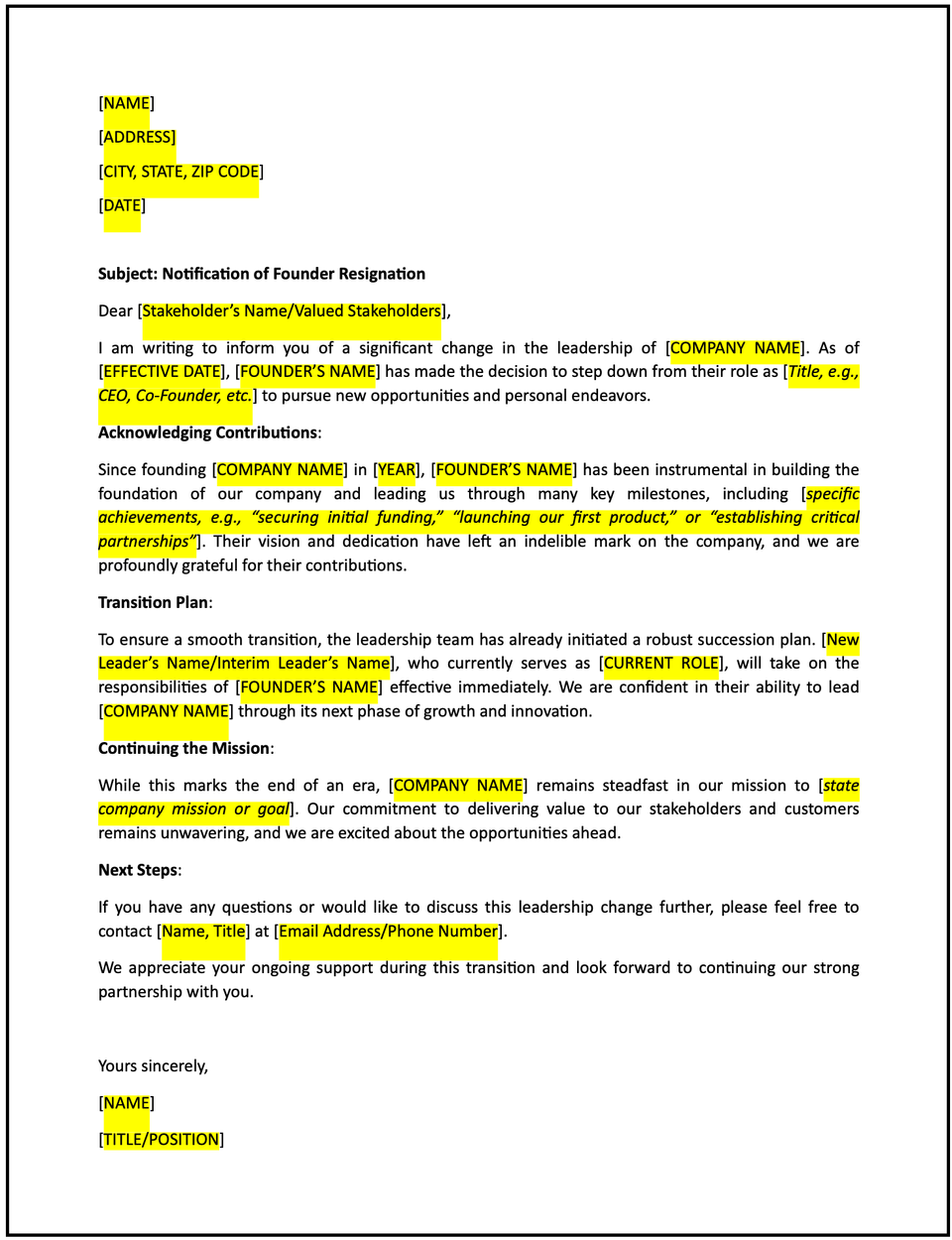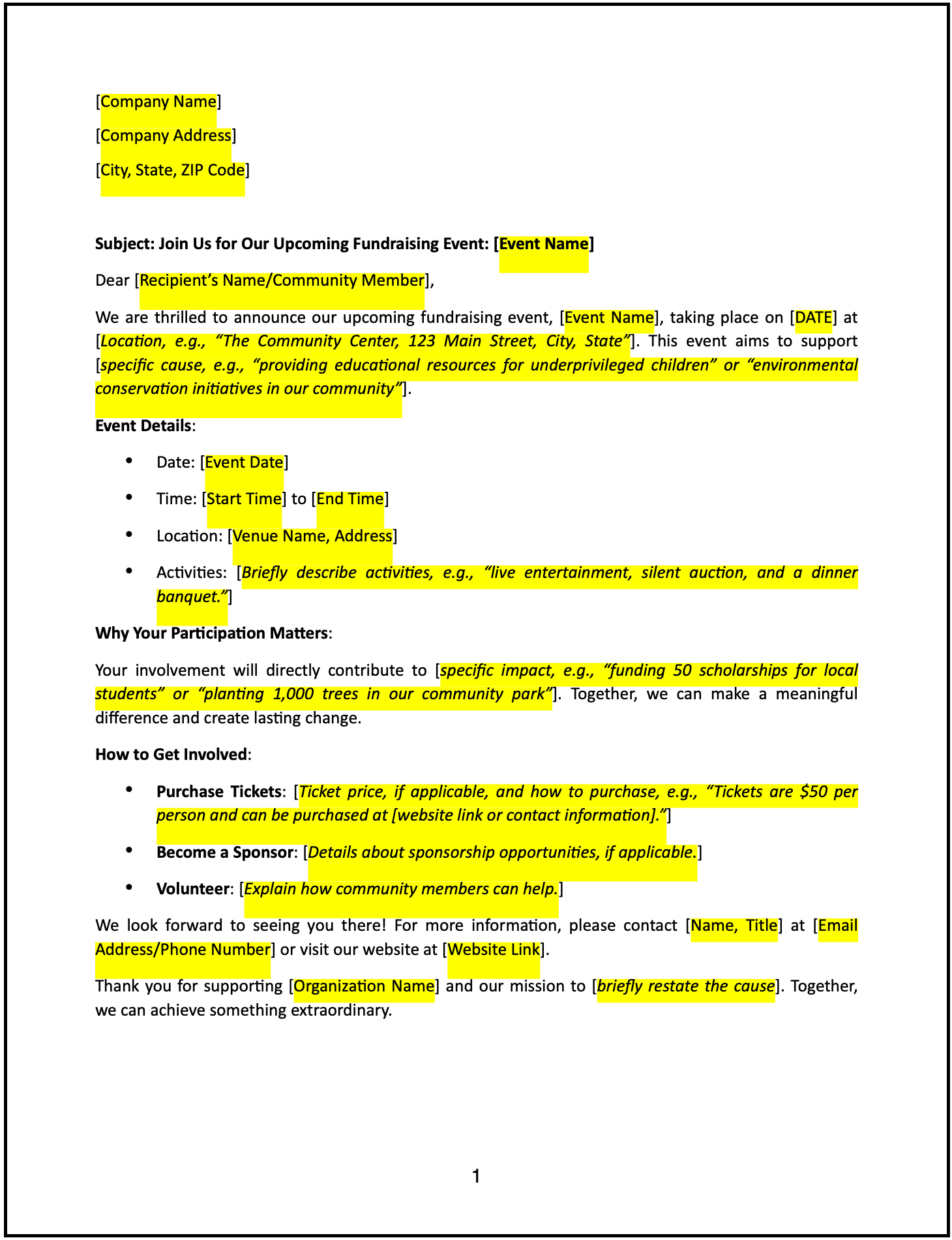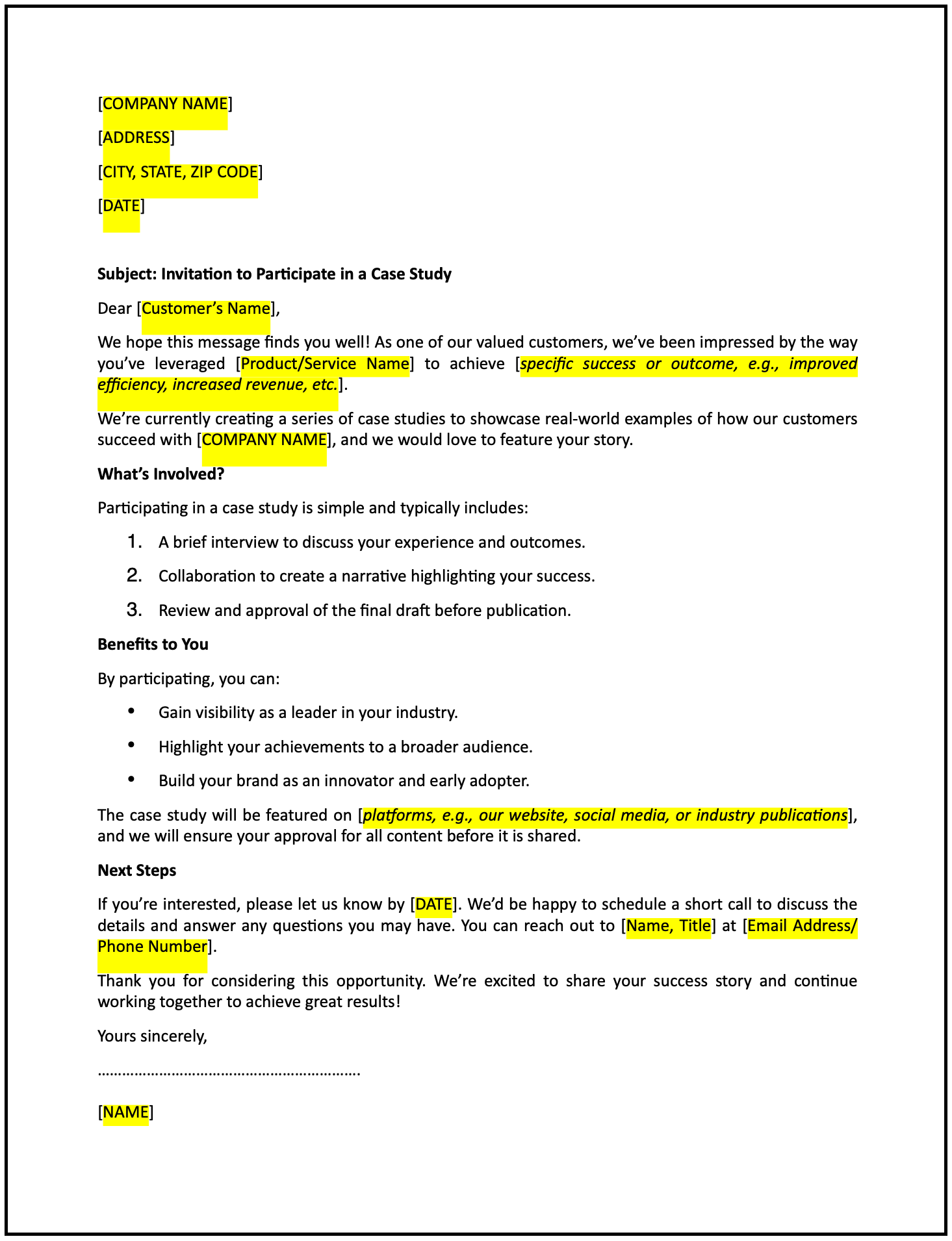Notification letter of founder resignation or exit: Free template

Notification letter of founder resignation or exit
A notification letter of a founder’s resignation or exit is a formal communication used to inform stakeholders, including employees, investors, and partners, about a significant leadership transition. This letter explains the circumstances, highlights the founder’s contributions, and outlines the company’s plan for continued success.
How to use this notification letter of founder resignation or exit
- Open with an introduction: Address the stakeholders respectfully and acknowledge their importance to the company’s journey.
- Announce the resignation or exit: Clearly state that the founder is stepping down or leaving the company, specifying the effective date if applicable.
- Provide context: Briefly explain the reasons for the resignation or exit, such as pursuing new opportunities or personal considerations.
- Highlight contributions: Emphasize the founder’s achievements and their impact on the company’s growth and mission.
- Outline the transition plan: Reassure stakeholders by detailing the steps being taken to ensure a smooth leadership transition, such as interim management or a successor’s appointment.
- Reaffirm commitment: Assure stakeholders of the company’s continued focus on its vision, goals, and operations.
- Encourage dialogue: Invite stakeholders to share their thoughts, ask questions, or provide support during the transition.
- Maintain a professional tone: Ensure the letter is clear, respectful, and focused on fostering confidence and collaboration.
- Provide contact information: Include details for the recipient to reach out with questions or schedule discussions.
Benefits of using a notification letter of founder resignation or exit
This letter ensures a structured and professional way to communicate leadership changes while maintaining trust and alignment with stakeholders. Here’s how it helps:
- Promotes transparency: Openly addressing the resignation prevents speculation and confusion.
- Reflects professionalism: A well-crafted letter demonstrates respect and attention to stakeholder relationships.
- Encourages collaboration: Providing a transition plan reassures stakeholders and fosters continued engagement.
- Builds trust: Highlighting the company’s resilience and focus on goals reinforces confidence.
- Celebrates contributions: Acknowledging the founder’s achievements shows appreciation and respect.
Tips for writing an effective notification letter of founder resignation or exit
- Be specific: Clearly outline the resignation details, the reasons, and the transition plan.
- Use professional language: Maintain a respectful and constructive tone to build trust.
- Provide context: Briefly explain how the transition aligns with the company’s vision and long-term goals.
- Highlight mutual benefits: Emphasize the company’s commitment to stakeholders and its continued growth.
- Include actionable steps: Share information about upcoming leadership introductions or updates to ensure alignment.
- Keep it concise: Focus on the essential points while ensuring the tone is professional and engaging.
Frequently asked questions (FAQs)
Q: What details should I include in this letter?
A: Include the resignation date, reasons for the exit, the founder’s contributions, and a transition plan.
Q: Should I personalize the letter?
A: Yes, addressing key stakeholders by name and referencing their role demonstrates attentiveness and professionalism.
Q: Who typically sends this letter?
A: The company’s CEO, interim leadership, or communication teams typically send this letter.
Q: How formal should this letter be?
A: The tone should be professional, respectful, and reassuring to foster trust and confidence.
Q: When should this letter be sent?
A: Send the letter promptly after finalizing the resignation to ensure stakeholders are informed early.
Q: Can this letter include information about the successor?
A: Yes, including details about the successor or interim leadership helps reassure stakeholders of continuity.
Q: Is acknowledgment from the recipient required?
A: While not mandatory, requesting acknowledgment ensures stakeholders have received and understood the announcement.
This article contains general legal information and does not contain legal advice. Cobrief is not a law firm or a substitute for an attorney or law firm. The law is complex and changes often. For legal advice, please ask a lawyer.


